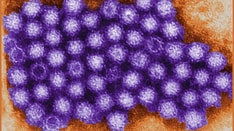Even a small reduction in childhood vaccinations could have significant clinical and economic public health consequences, according to the findings of a new analysis.
"The results of our study find substantial public health and economic consequences with even minor reductions in [measles, mumps, and rubella vaccine (MMR)] coverage due to vaccine hesitancy and directly confront the notion that measles is no longer a threat in the United States," the researchers write.
Nathan C. Lo, BS, a MD/PhD candidate from Stanford University School of Medicine in California, and Peter J. Hotez, MD, PhD, from Texas Children's Hospital Center for Vaccine Development, National School of Tropical Medicine, Baylor College of Medicine, Houston; Baylor University, Waco; James A. Baker III Institute for Public Policy, Rice University, Houston; and Scowcroft Institute of International Affairs, The Bush School of Government and Public Service, Texas A&M University, College Station, report their findings in an article published online July 24 in JAMA Pediatrics.
In a model using the MMR vaccine as an example, the researchers found that a 5% reduction in vaccine coverage among children aged 2 to 11 years would result in a threefold increase in measles cases among children in that age range, and millions of dollars in increased public sector costs.
The findings underscore the "urgent need" for public health officials to address vaccine hesitancy — "defined as a delay or refusal to accept vaccination based on personal beliefs despite availability — that could accelerate gaps in vaccine coverage across the United States," they write.
"I think our study is a wake-up call for what we can expect in the coming months and years as vaccine coverage rates continue to decline in the 18 states that now allow non-medical or philosophical belief exemptions," Dr Hotez said in a news release.
Models and Assumptions
The researchers based their model on publicly available data collected by the Centers for Disease Control and Prevention from 2010 to 2015 on MMR vaccine coverage for children aged 2 to 11 years.
To estimate the prevalence of vaccine hesitancy, they used state-level data from the Centers for Disease Control and Prevention's ChildVaxView and SchoolVaxView, which provide information on vaccine coverage of children in childcare and in kindergarten and middle school, respectively. According to current estimates, national MMR vaccine coverage among children aged 2 to 11 years is 93%, with 48 cases of measles occurring annually.
Relying on previously published research, the estimated public sector cost of each case of measles is $20,000. However, the researchers warn, this may be a conservative estimate, as it accounts only for expenses such as contact tracing, laboratory analysis, and staff salaries. It does not include personal costs such as medical care, parental time, and days lost from school or work.
Case Load Might Triple
The authors used a mathematical model to construct approximately 10,000 hypothetical scenarios to determine what might happen if measles is introduced into a community by travelers coming from countries where it is endemic, at various levels of vaccine coverage. They found that a 5% reduction in MMR vaccine coverage would triple the current case load to 150, at an additional cost to the public sector of $2.1 million.
Enhancing vaccine coverage through measures such as eliminating nonmedical exemptions would increase national coverage in this age group to 95%, with a corresponding 20% decrease in the number of annual cases, from 48 to 38, "and was an effective strategy to mitigate annual measles cases and costs."
Many parents still are influenced by misinformation on vaccine safety and by the perception that measles is no longer a significant risk in the United States, they add. This analysis shows "measles still poses a substantial threat for large outbreaks in children," especially if vaccine coverage continues to decline. Attaining herd immunity from measles requires vaccine coverage of more than 90% to 95%, the authors write. "The current empirical data on state-level vaccine coverage suggest that many settings are on the border of the desired threshold for herd immunity," they explain.
If anything, the estimates in this analysis are conservative, as a result of the underlying assumptions and the focus only on children aged 2 to 11 years, the researchers write. Further declines in MMR vaccine coverage could allow measles to become endemic again in the United States, "and would likely result in thousands of annual measles cases."
Eliminating nonmedical personal belief exemptions to vaccine coverage may reduce this threat, and should be considered when state and national governments formulate their vaccination policies, the researchers conclude.
The authors have disclosed no relevant financial conflicts of interest.
JAMA Pediatr. Published online July 24, 2017. Full text
Medscape Medical News © 2017 WebMD, LLC
Send comments and news tips to news@medscape.net.
Cite this: Measles Vaccine Study Findings a 'Wake-up Call' - Medscape - Jul 25, 2017.










Comments